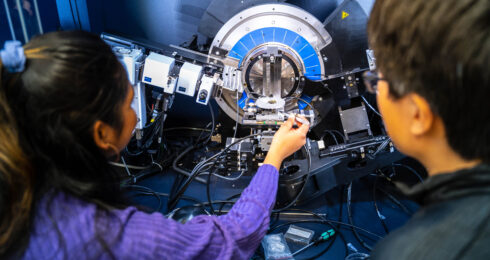Sonus Microsystems has developed high-performance, customizable, and versatile transducers with novel applications in healthcare, non-destructive testing (NDT), wearables, and beyond. These sophisticated devices enable detailed imaging and seamless health tracking and pave the way for automated, AI-enhanced monitoring, facilitating a new level of non-invasive personalized care.
Sonus had to experiment with many design variables, including a variety of materials and unusual substrates found in the microfabrication industry. In a standard cleanroom, this kind of process discovery would take months of work to implement, mainly because typical UV exposure systems and metal deposition systems cannot handle substrates other than a full-sized standard silicon wafer. For each of the different polymer materials Sonus wanted to try, they were required to run a significant number of lengthy experiments to determine the best UV exposure dose for each photopolymer testing, even before starting any fabrication runs.
Thanks to the equipment at the ANF, especially its maskless ML150 lithography system, Sonus was able to rapidly find the best UV dose for the different photoresists to test. This capability at ANF enabled the company to combine the equivalent of 20 separate experiments into a single run, saving them both time and funds. This machine, combined with the metal deposition systems at the ANF, also allowed Sonus to fabricate their transducers with unusual shapes and sizes. The capabilities of the ANF have allowed Sonus to decrease the development times of their prototypes and improve the performance of their devices, going from months to weeks.
EOIs are now open for UBC Blusson QMI’s Nanofabrication Accelerator Program – learn more and apply here.
Learn more about the ANF here.
A virtual tour of the facility is available here.


